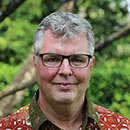If we are to find sustainable solutions to climate change, we have to look at the bigger picture.
And in that picture climate change – and carbon emissions – aren’t everything. Neither are biodiversity, water, forests, agriculture or coastal habitats and oceans, gender or communities, education, poverty and inequality or energy. In the big picture, the picture that counts, they are all important.
Saying this doesn’t make me a climate sceptic or a climate denier, or even a climate cynic. Far from it. But as the world gathers for COP22 in Marrakesh, a year after the Paris Agreement, it is clear to me that if we are to achieve the Sustainable Development Goals (SDGs) and meet our climate targets, we have to find a new way of doing things.
The overwhelming tendency, the modus operandi of development, is to operate in silos, or compartments, of our own disciplines, our own organisations, our own ministries and our own sectors, all of us working toward our own targets of success.
An agricultural ministry is told to increase production of a certain crop, and if they have to clear 25 percent of the nation’s forests and all the biodiversity within, roll over indigenous groups, so be it. Climate change – let’s leave that to the Environment Ministry. Campaigners and non-governmental organisations often tend to stay in their own silo too – focusing on a single issue with little regard for the relevance of any others. That has to change.
We have to look at each SDG in context with the others, and approach them as a whole. We have to tear down the walls that separate sectors, because they do not represent the situation on the ground anywhere. In the real world, there are broad landscapes within which different interests, demands, objectives and targets compete.
Approaching solutions holistically is at the heart of what is known as the ‘landscapes approach’ and the global movement that is arising around it. The term is not known beyond development circles but it should be, because every stretch of land or sea touched by mankind makes up the millions of landscapes on this planet.
The approach is neither prescriptive nor inflexible. It is not top-down. It embraces compromise. It accepts that in any dispute about how to manage resources there will be a need for arbitration between different demands – small-scale farmers, big agro-business, international agreements, national and local governments, conservationists.
The objective is to seek multiple measurable benefits from every action and investment in a landscape – more food, more income, greater equality, and a healthy environment. It assumes there will be trade-offs with no absolute winners and no absolute losers.
Enter the Global Landscapes Forum. Three years ago, a small group of organisations including the World Bank, the United Nations Environment Programme, together with my organisation, the Centre for International Forestry Research, created a platform on the margins of the UN’s climate change meetings where every sector and discipline could connect, through the lens of the landscapes approach, the climate agenda and the 2015 SDGs.
Today GLF is taking on a life of its own. Last year, more than 3,000 people from 105 countries – everyone from California Governor Jerry Brown to a tribal leader from Borneo – joined us in Paris. Its sixth gathering is being held in Marrakesh on November 16.
It has grown into a global community of several hundred organisations, with tens of thousands of people from every continent, including scientists, lawyers, bankers, indigenous and community leaders, farmers and foresters, NGO personnel, journalists and policy makers, actively sharing their experiences, research, initiatives and knowledge. In short, we have created a global conversation on building sustainable landscapes that is changing the way we think, connect and act.
Already we have received pledges to restore 148 million hectares of degraded land from countries all over the world. The next target is to increase that to 400 million hectares – and to devise the action plans needed to implement and measure them.
Our vision is to reach far beyond expert communities and connect and inspire a billion people to join us by 2020. We believe this is vital not just for reshaping the climate and development agenda, but for building a world that is sustainable, more prosperous and more equitable.
*This article was originally published by the Thomson Reuters Foundation News
We want you to share Forests News content, which is licensed under Creative Commons Attribution-NonCommercial-ShareAlike 4.0 International (CC BY-NC-SA 4.0). This means you are free to redistribute our material for non-commercial purposes. All we ask is that you give Forests News appropriate credit and link to the original Forests News content, indicate if changes were made, and distribute your contributions under the same Creative Commons license. You must notify Forests News if you repost, reprint or reuse our materials by contacting forestsnews@cifor-icraf.org.

















